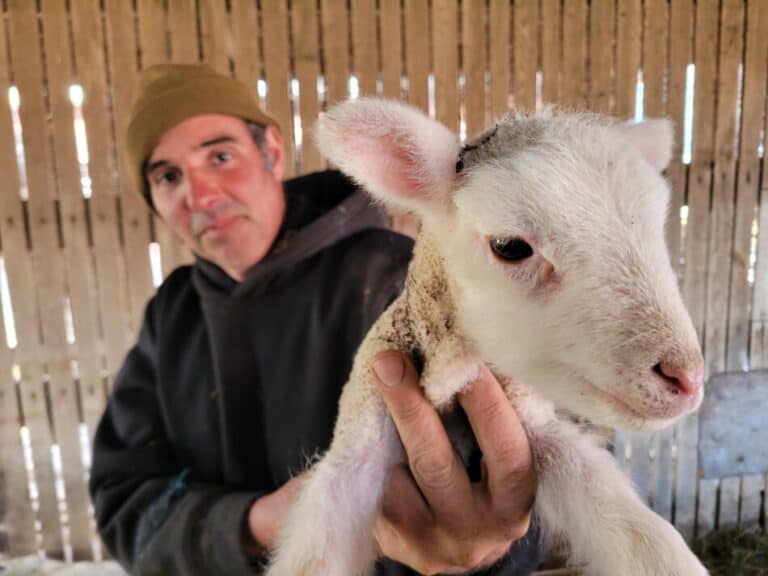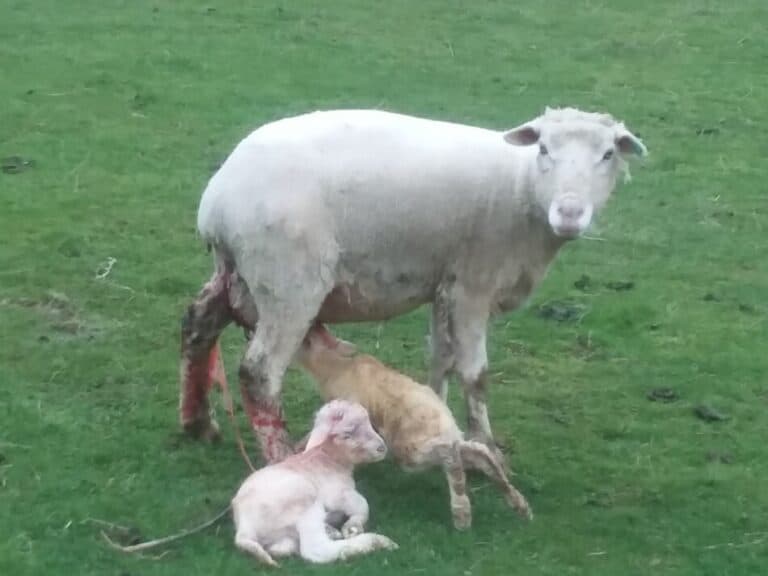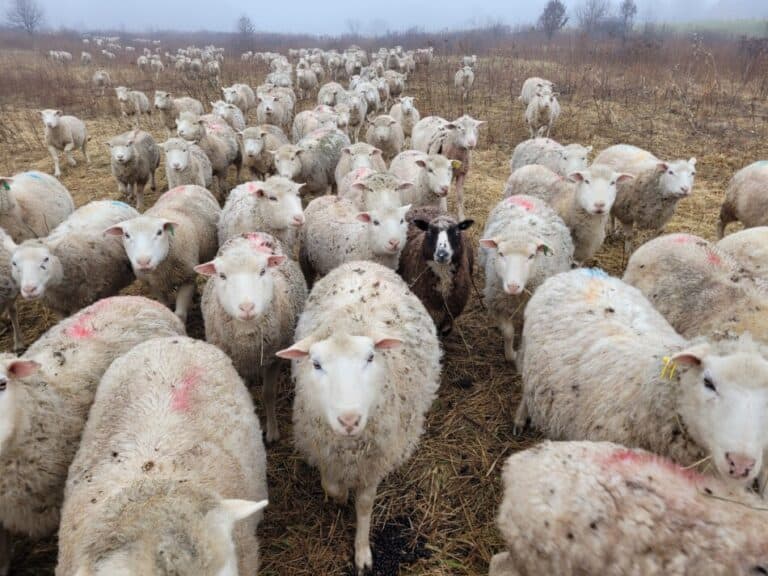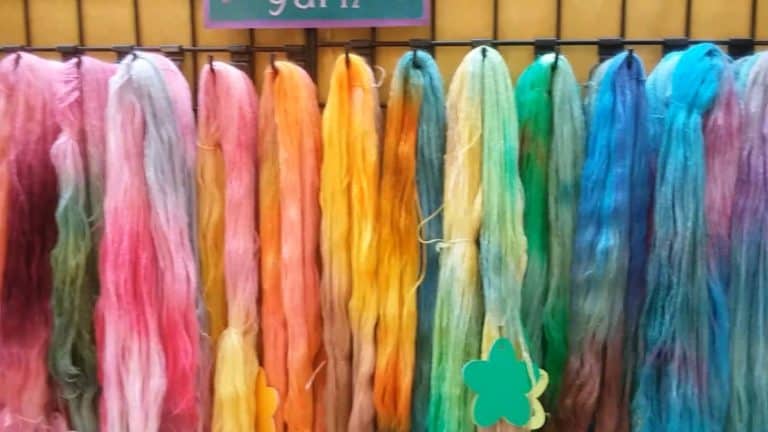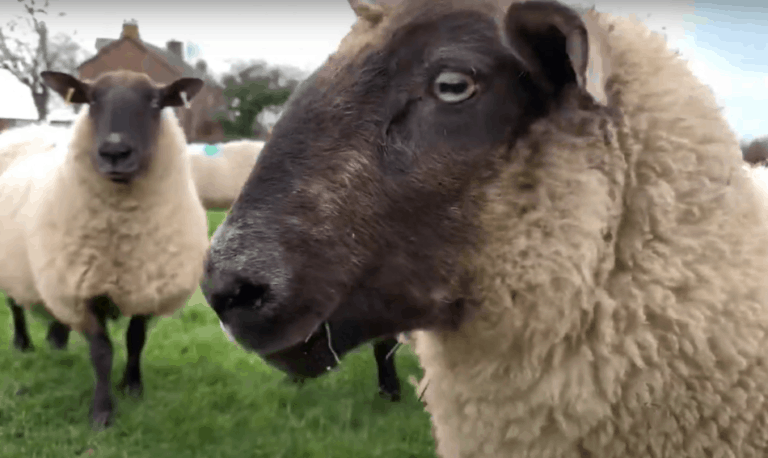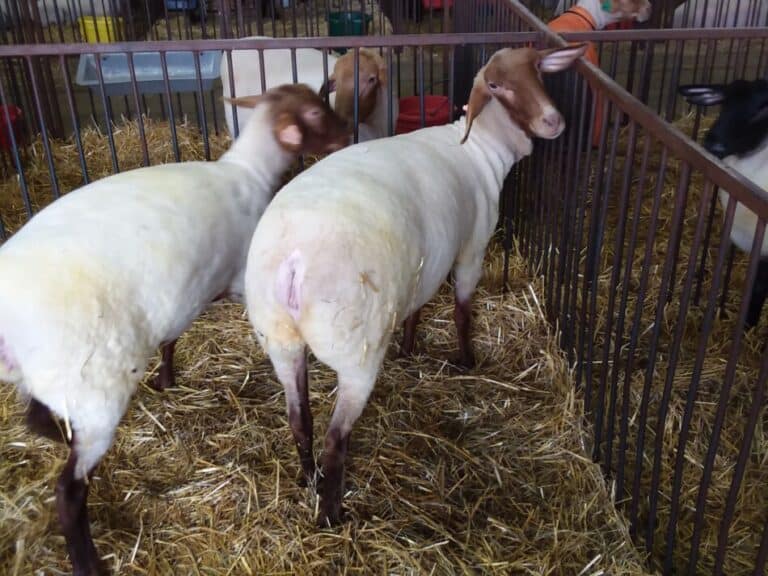Will Sheep Eat Fruit Trees?

You’ve got sheep and you’ve got grass that you want mowed down in your new orchard. Is this a match made in heaven or a disaster in the making?
Sheep will eat the bark off of young fruit trees, which will kill the trees. Older fruit trees are not as attractive to sheep, but can be eaten once the sheep no longer have fresh grass.
The key with grazing sheep around fruit trees is to keep the sheep moving.
If your flock is standing around looking for something good to eat, you can bet they will try out that tasty little apple or peach sapling.
Sheep are grazers, not browsers. This means that they prefer to eat grass over other more woody plants.
That is only the case when your sheep have plenty of grass to choose from and are getting adequate minerals from their diet.
Easy Sheep Breeds For Beginners gives you our top picks of the easiest to start with sheep.
Once your orchard gets some age to it, the sheep will no longer find it as attractive of a snack. Until then here are some things you can do to keep your trees safe and graze the orchard at the same time.
The sheep in the picture above are around on of our Butternut trees and the picture below is of an apple tree they were pastured around earlier this summer.
As long as the sheep have grass, they leave the older trees alone.
Prevent sheep from harming your trees with barriers
The obvious answer to keeping sheep away from young trees is to physically put up a barrier to keep the sheep away from the tree.
This could be a circle of fence, like hardware cloth or closely spaced welded wire, held in place with a support post.
Another option is to do your best with portable fencing, like electric netting, run through the rows of trees.
You’ll be able to get reasonably close to the trees but don’t have the netting touching them!
Is Electric Netting Worth It? goes over the good parts and the not so good parts of fencing in your sheep with netting.
The reason I wrote “do your best” with the netting is that you would have the main paths through the orchard grazed by sheep, but would still need to do the close up trimming work yourself.
You can see the field tile that was used as rabbit protection for this tree has been outgrown.
No sheep specific protection was used other than keeping them fenced off of the trees when the trees were younger.
Frequently move the flock to new grass
Since sheep are grazers, not browsers, the most attractive edibles in your orchard are not the trees.
That all changes when you keep the sheep in once place long enough for them to eat the all of their preferred forages.
Once the sheep eat their favorite grasses, they are considering what else might be tasty. This is where your fruit trees become a potential target!
The potential problem here is management. The sheep needed moved to a different section of the orchard before the fresh grass is eaten or trampled.
If you wait until they eat every last blade of grass, you are asking them to taste test your trees.
You’ll notice the problem is not the sheep heading straight for the trees and stripping leaves and bark. They want to eat the grass.
Your sheep will start snacking on trees when you slack off and don’t move them to fresh grass soon enough.
Backyard Sheep gives yo some ideas of how to make sheep work, even in your yard!
Timing of moves depends upon the sheep
You should also be noticing a lack of specifics here. Why? I can not possibly tell you how long your sheep can stay in one spot or how frequently you should move them.
This depends upon your situation and management plan.
I can tell you that you will be better off with more moves rather than less moves, but the exacts you’ll have to experiment with and see how it goes for your flock.
Once you get some experience, you’ll know that the movement through the area you are pasturing will depend upon the year, even down to the day.
Your trees will be less attractive as they grow
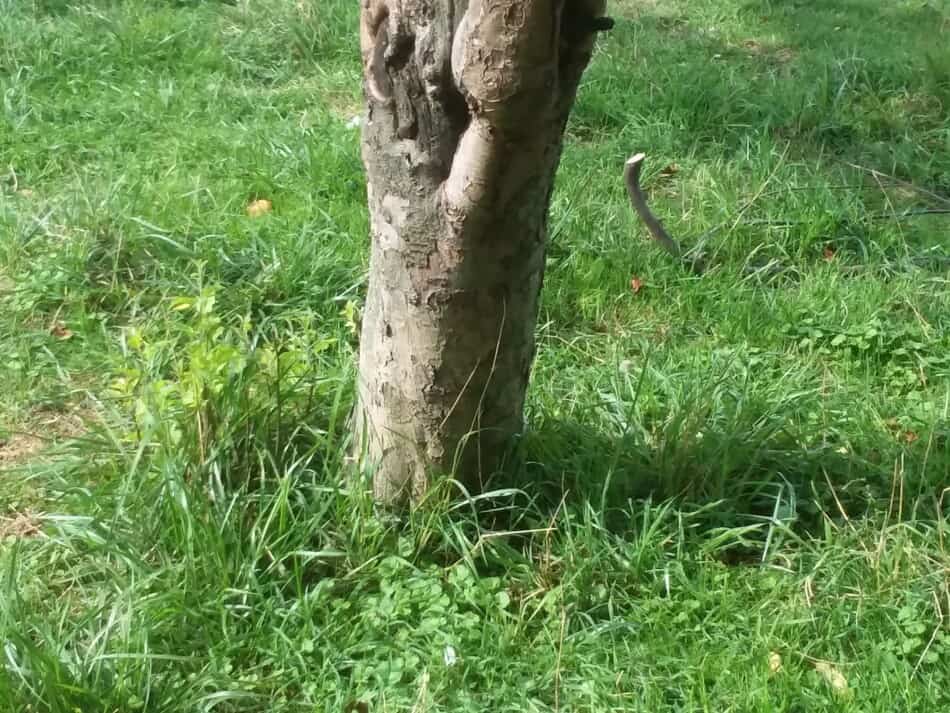
The good news here is that your fruit trees will be much less attractive to your sheep as the trees grow and the bark toughens.
We have some apple and pear trees in our yard and periodically graze the flock through the trees. Why mow it when the sheep can eat it?
They do not eat the trees, but they do appreciate the shade.
Keep in mind that these trees are more than 15 years old and the sheep only stay in the same area as the trees for as long as there is grass.
Once the grass is eaten, the sheep need to move on.
This is especially true in the winter. The sheep are looking for fresh grazing in the winter, even thought there isn’t any until spring!
If we leave them around the fruit trees all winter, they will start stripping the bark.
How Much Hay Will My Sheep Need? will help you figure out the hay you need to plan on buying for your flock.
Sheep near young fruit trees is risky
If you have other options for sheep pasture, I would put them somewhere else. Keeping the flock with the young fruit trees is a risky choice.
A few hours of unnoticed bark eating by the flock can cause a devastating amount of damage to your growing orchard. To me, it’s just not worth the risk.
If you decide to take the chance and keep the sheep around the fruit trees, make sure the have plenty of high quality hay to eat and a sheep mineral. These are both cheaper than ruining your trees.
When they are looking around for something else to taste test, especially if the hay is not providing for all of their nutritional needs, this is when they will start getting after your trees.
Heavily consider the benefits and potential losses of set stocking (not moving pastures) sheep in with fruit trees.
Unless, your fruit trees are well established with tougher bark, they will be an attractive food source for your sheep.
Keep your investment in fruit trees (not to mention your time), safe by grazing the sheep somewhere else.
When your orchard is mature enough for sheep, keep the sheep moving through to keep them focused on grass rather than fruit trees!
Improving Orchards With Sheep is a short article from Mother Earth News by a Vermont shepherd using Corriedales to graze his apple orchard.
